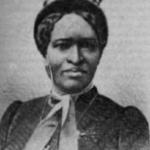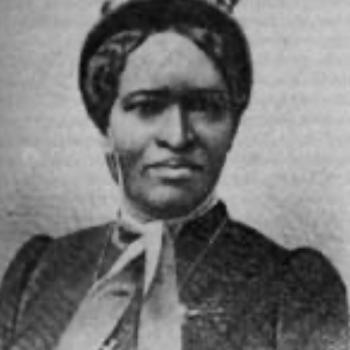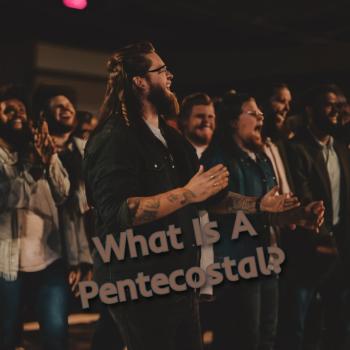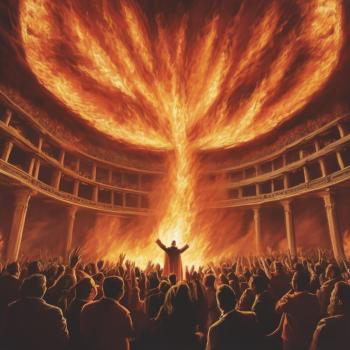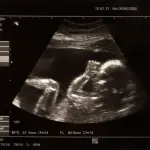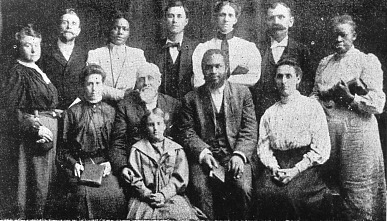 In my article What Is A Pentecostal? I referred to the different continuationist movements and did a broad-brush stroke of their similarities and differences. I also defined a Pentecostal believer as “any Christian who agrees that the gifts of the Spirit are in operation today.” But what differentiates these three unique movements of the last century?
In my article What Is A Pentecostal? I referred to the different continuationist movements and did a broad-brush stroke of their similarities and differences. I also defined a Pentecostal believer as “any Christian who agrees that the gifts of the Spirit are in operation today.” But what differentiates these three unique movements of the last century?
Initially, all three of these movements, in my opinion, in some way, shape, or form, are rooted in the Pentecostal movement of the early 20th century. When the Pentecostal movement began in April of 1906 (though it could be argued it began earlier), the driving focus of renewed interest in the Holy Spirit was centered around being empowered for Christian living and missional witness. The dominant distinctive characteristics of these early, Spirit-filled believers were speaking in tongues, prophecy, healing, exuberant emotional demonstrations, and falling out in the Spirit (sometimes called being slain in the Spirit). While these were normal to the early Pentecostal movement, they were also present in the subsequent movements with perhaps less emphasis on the “exuberant emotional demonstrations.”
Over these next three articles, we will explore these likenesses and differences of all three distinct Pentecostal expressions, starting with the Pentecostal Movement.
The Pentecostal Movement (1906 to the Present)
I have already spent some time describing the beliefs of Pentecostals in my article What Is A Pentecostal?, but the Pentecostal movement from its foundation has the specific distinction of its emphasis on the gift of speaking in tongues.
As the movement began, many early Pentecostals viewed Acts 2:1-4 as the blueprint for what baptism in the Holy Spirit should look like.
When the day of Pentecost arrived, they were all together in one place. And suddenly there came from heaven a sound like a mighty rushing wind, and it filled the entire house where they were sitting. And divided tongues as of fire appeared to them and rested on each one of them. And they were all filled with the Holy Spirit and began to speak in other tongues as the Spirit gave them utterance.
Charles Parham and the Agnes Ozman Experience
Charles Parham opened the Bethel Bible Institute in Topeka, Kansas in October of 1900. His teachings centered around healing and the gifts of the Holy Spirit with an emphasis that tongues would be the accompanying gift of the experience of the baptism of the Holy Spirit. Shortly after the school opened, on New Years Day of 1901, Agnes Ozman, asked Parham to lay hands on her to receive the baptism of the Holy Spirit. Agnes writes that prior to this experience,
“When I learned that the Holy Ghost was yet to be poured out in greater fullness, my heart became hungry for the promised comforter and I began to cry out for an enduement with power from on high. At Times I longed more for the Holy Spirit to come in than for my necessary food. At night I had a greater desire for him than for sleep.”
When Parham laid his hands on the spiritually hungry Ozman, she experienced what her heart was longing to receive.
“It was nearly seven o’clock on this first of January that it came into my heart to ask Brother Parham to lay his hands upon me that I might receive the gift of the Holy Spirit. It was as his hands were laid upon my head that the Holy Spirit fell upon me and I began to speak in tongues, glorifying God. I talked several languages, and it was clearly manifest when a new dialect was spoken. I had the added joy and glory my heart longed for and a depth of the presence of the Lord within that I had never known before. it was as if rivers of living waters were preceding from my innermost being.”
Agnes Ozman said that the next day after this experience she was overwhelmed with questions of her experience. She pointed to the Bible to explain her experience, noting Acts 2:4 and Acts 19-1-6 as the proof texts that biblically explained her experience.
Interestingly, Ozman redirected her hungry friends to not seek the same experience of speaking in tongues, but to instead seek the Holy Spirit. She writes, “But I told them not to seek for tongues but to seek for the Holy Ghost. I did not know at that time that anyone else would speak in tongues. I did not expect the Holy Spirit to manifest Himself to others as He did to me.”
On January 3, 1901, Ozman’s hungry fellow students continued to seek this same baptismal experience and received the desire of their hearts. “God answered their prayers by pouring out His Spirit and one after another began speaking in tongues and some were given interpretation.” (To read the entire account in the words of Agnes Ozman follow the link to her Personal Testimony.”
Charles Parham’s Doctrinal Influence on Tongues
These events and experiences in early January 1901 among Parham’s Bethel Bible Institute students, reinforced his teachings that tongues accompanied the baptism of the Holy Spirit. This quickly shaped the early doctrinal positions of the Pentecostal movement and the subsequent development of Pentecostal denominations. Many of those denominations still hold to what would eventually be called the “initial evidence of the baptism of the Holy Spirit.”
Dr. Vinson Synan, a Pentecostal historian, agrees that the doctrine of the initial evidence of speaking in tongues can indisputably be traced to Parham and the January 1901 events that took place at his school in Topeka, Kansas. For Parham, this was not just experiential evidence, but biblical evidence.
For Parham, however, tongues were not a Pentecostal feather in the cap, but had a greater purpose. Synan writes,
Teaching that tongues were a supernatural impartation of human languages for the purpose of world evangelization, Parham also advocated that missionaries need not study foreign languages, since they would be able to preach in miraculous tongues all over the world. (The Century of the Holy Spirit, Kindle Location 98)
Parham’s influence in the early doctrinal positions of the Pentecostal Movement have lingered on and, despite its controversial position, speaking in tongues has continued to be considered a normal experience of the baptism of the Holy Spirit. Even though some other aspects of Parham’s ministry were questioned, including some of his thoughts on race and his indirect influence in the Oneness Apostolic movement, his biblical position on tongues as initial evidence would become a seemingly unmovable cornerstone of the Pentecostal experience of baptism in the Holy Spirit.
In addition, Parham believed that the baptism of the Holy Spirit should be part of every believer’s Christian experience. This dogmatic position saturated the teachings and direction of Parham and those that adhered to his influence. Not long after opening his school in Topeka, Parham closed its doors and spent more than four years preaching revivals and spreading the newly established Pentecostal doctrine along the way. These revivals included healings and other miracles, drawing more and more people into the Pentecostal experience.
Parham would eventually resettle his family and ministry in Houston, Texas. Before moving his family to Texas, he returned to Kansas and asked an African-American minister if she would accompany him and serve as the governess of his family. Lucy Farrow took the position as an opportunity and was, undoubtedly, more influenced by Parham’s teachings.
During this two-month sabbatical from her pastorate, two important events would take place that would shape the future history of the Pentecostal Movement. First, Farrow experienced baptism in the Holy Spirit and spoke in tongues. Second, while away in Kansas, Farrow asked a visiting holiness minister named William Seymour to fill her pulpit of her Houston congregation.
After returning to Houston, Farrow shared her experiences with Seymour. When Parham relocated to Houston in 1905, he established his new bible school. Farrow convinced Seymour to attend and, though he did not immediately have the same experience as Farrow, he embraced the Pentecostal teachings of Parham. Seymour eventually accepted a call to go to Las Angeles, California with the mission of spreading the Pentecostal experience of baptism in the Holy Spirit.
Initially preaching at the Santa Fe Mission and having some conflict over his doctrinal stance, Seymour and a small group of families started meetings at the house of Richard and Ruth Ashberry at 214 North Bonnie Brae Street in Los Angeles. Though Seymour was teaching on the baptism of the Holy Spirit and the multiracial gathering (which was itself miraculous), there was no breakthrough of baptism among the attendees. Seymour sought help from his friend Lucy Farrow from Houston. Farrow accepted the invitation to Los Angeles to assist Seymour in the mission.
Lucy Farrow brought a stirring to the gathering on North Bonnie Brae Street and to Seymour as well. Soon, upon his request, Seymour prayed for a man who received the baptism in the Holy Spirit and spoke in tongues. Seymour rushed to the home on North Bonnie Brae Street to share what had happened. After sharing, “Seymour and several others fell to the floor in religious ecstasy, speaking with other tongues.” (Vinson Synan, The Holiness-Pentecostal Movement, 106)
Azusa Street and Beyond
After the visit from Lucy Farrow and William Seymour’s experience of baptism in the Holy Spirit with speaking in tongues, the small house was not large enough (at one point, the floor actually collapsed under the weight of the people without any injuries).
Seymour found a home for his gatherings at 312 Azusa Street in Los Angeles. In this former, dilapidated church building the Pentecostal message began to spread. Many traveled from all around the globe to Azusa Street to experience the baptism in the Holy Spirit and also embraced the teachings of tongues as the initial evidence of this experience. Other Pentecostal fires were being kindled as these traveling believers returned to their communities or answered a call to go to other places, including foreign missions.
While there is certainly room for arguing about speaking in tongues as a necessity in experiencing the baptism in the Holy Spirit, one is hard pressed to say that such an experience is not normative. The vast majority of believers who identify as continuationists have also had this same experience.
Parham, Farrow, and Seymour all taught this essential distinctive as part of the Pentecostal experience and that influence, whether biblical or suggestive, was a normal act of the Holy Spirit on believers who sought (and still seek) the empowerment. While I plan to explore this doctrine deeper, I must admit that I have met very few continuationists who practice the gifts of the Spirit who have not also spoken in tongues. This does not prove that the gift of tongues is essential to the Pentecostal experience, but, equally, this also does not disprove such a position.
Without revealing all of my cards on this topic, I can say with conviction that speaking in tongues is a normative experience of the baptism in the Holy Spirit and is helpful in the prayer life of the believer. Much like Agnes Ozman’s wise counsel to her Spirit-seeking friends, I would advise any believer to not seek the gift, but the Giver. The Holy Spirit guides us into all truth, and hungering for more of his presence and power in our lives is never a bad thing. Experiencing the gifts of the Spirit in our lives and in our ministry to the world should not be a Pentecostal experience, but the experience of every believer and follower of Jesus in partnering with his mission to “seek and save the lost.”


